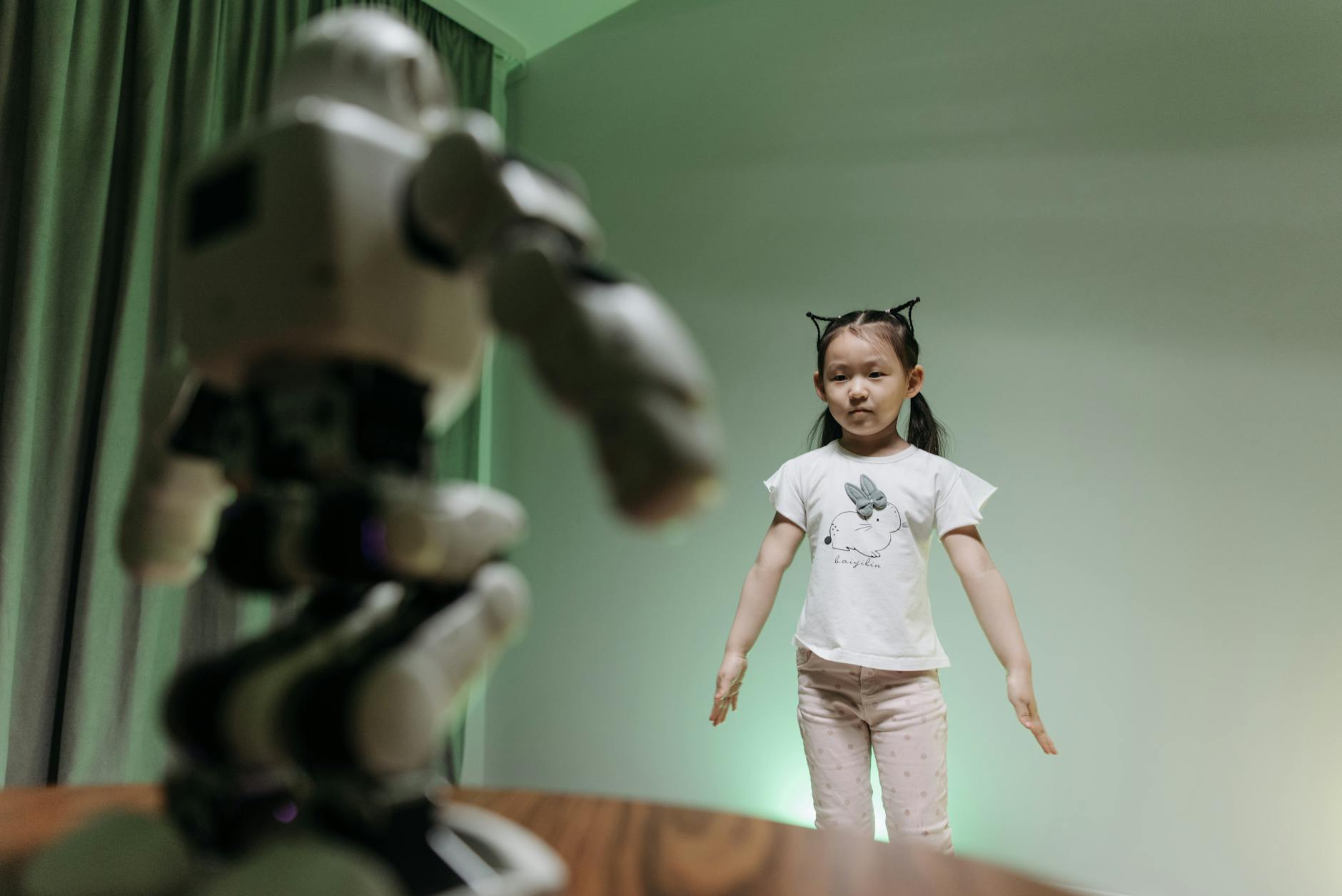OpenAI vs Apple vs Microsoft – Who Will Conquer AI?
IT Companies in AI Race
Things are heating up in the race for tech giants to take lead in artificial intelligence. Let’s dig into how Microsoft, Apple, and OpenAI are carving out their spots in this high-stakes game.
Microsoft’s Innovation Vibe
Microsoft has seriously turned the tables under CEO Satya Nadella’s watch. They’ve shifted gears from being a bit stuck in their ways to a full-on push-the-boundaries tech powerhouse. Teaming up with OpenAI has been a game changer for them. Together, they’ve rolled out hot stuff like Microsoft Copilot and ChatGPT, making life easier for folks using their tech (Microsoft Support).
Not just riding the wave, Microsoft is all in on responsible AI too. They’ve got their hands full with setting up teams, handling tricky situations, diving into public policies, and building AI systems that play fair and legal (Microsoft). They’re not just talking the talk; they’re walking the walk in the world of ethical AI.
Apple’s Sneaky AI Moves
Apple’s got its own style when it comes to AI, keeping things smooth and almost invisible in their gadgets. They’ve nailed it at making our tech feel super smart without showing off (Apple’s AI race). Features tucked into personal devices like Siri, Face ID, and the camera are everyday magic.
On the hardware side, those custom A-series chips with built-in neural engines are where Apple shines, doing AI heavy lifting more smartly. They’re huge on privacy too, keeping data glued to the user’s device whenever possible.
OpenAI’s Advancements
OpenAI is the wild card here – totally shaking things up in pure AI research. Their latest brainchild, codenamed ‘Strawberry,’ is pushing AI’s limits in reasoning, stepping up what these tech brains can do (Reuters).
Their buddy-up with Microsoft is big news. With Microsoft’s wallet and tech muscle backing them up, OpenAI’s churned out wonders like GPT-3 and ChatGPT (link needed). This tag team works well for both, with Microsoft slotting OpenAI’s smart builds into their stuff, leveling up what users can do with these tools.
| Company | Major AI Moves | Cool Tech |
|---|---|---|
| Microsoft | Innovation drive, ethical AI, tag team with OpenAI | Copilot, ChatGPT |
| Apple | Low-key AI integration, privacy first approach | Siri, Face ID, Neural Engine |
| OpenAI | High-end AI research, reasoning tech (‘Strawberry’) | GPT-3, ChatGPT |
Craving more tech gossip? Dive into our scoop on OpenAI vs Microsoft AI capabilities and the domino effect in the OpenAI, Apple, Microsoft AI tussle.
Microsoft vs. OpenAI
What’s cookin’ in the tech kitchen with Microsoft and OpenAI? Let’s unravel the rivalry and camaraderie in the high-stakes world of artificial intelligence. From throwing out cool gadgets like Copilot and ChatGPT to juggling the responsibilities of ethical AI, these companies are shaking things up big time.
Responsible AI Initiatives
Okay, so both Microsoft and OpenAI are really into making sure that AI plays nicely with humanity’s rules. Microsoft likes to go by this pretty solid list of do’s and don’ts, making sure their AI is fair, safe, and all-around decent to humans—and hey, more power to ’em. They’ve got fingers in pies like AI Frontiers, working to play fair with technology.
Not to be outdone, OpenAI’s goal is to make AI that stays safe and isn’t running around causing mischief. They’re all about keeping it ethical, steering clear of anything harmful. It turns out both companies want AI to be the kind of tech you’d introduce to your grandma.
Collaboration Overview
These two tech giants aren’t always duking it out—they sometimes link arms to fast-track cool AI stuff. When Microsoft and OpenAI team up, they churn out some seriously futuristic gadgets. Curious for more juicy bits? Catch up on their tag team adventures in the AI race featuring Apple, Microsoft, and OpenAI.
Copilot and ChatGPT
Enter the stars of the show: Microsoft’s Copilot and OpenAI’s ChatGPT. They’re nifty little things, doing wonders in the realm of words and work.
| Feature | Microsoft Copilot | OpenAI ChatGPT |
|---|---|---|
| Main Role | Being a digital buddy | Chatting like a human |
| Special Powers | Making things, helping with chores | Human-like convo |
| Where to Find It | Office space, productivity land | Customer help, chatty apps |
Copilot is like that friend who helps you brainstorm. It drafts content for you, drops clever phrases, pops in images, and even whips up PowerPoint decks straight from your Word musings (Microsoft Support). If you’re swamped at work, it’s there to lend a helping hand.
Meanwhile, ChatGPT does the talking. Developed by OpenAI, it’s always up for a chat, deftly handling user questions like it’s been doing it all its life. This makes it perfect for things like customer service and spicing up apps with interactive chats (Microsoft Support).
These tools are all about taking user happiness and hard work to new levels, giving us a peek into how the brains at Microsoft and OpenAI work. Wanna geek out on their coolness? Check out more on OpenAI versus Microsoft AI capabilities.
So, what’s the takeaway here? Keep an eye on what Microsoft and OpenAI are cooking. Whether it’s responsible AI, teaming up for tech, or launching fresh tools like Copilot and ChatGPT—these maestro’s are setting the stage for the AI future. Don’t miss a beat of their ongoing saga in the impact of OpenAI, Apple, and Microsoft AI competition.
Apple vs. Microsoft AI Race
Apple and Microsoft are both chasing the same prize in AI, but they’re running different races. Let’s have a look at what these two tech giants are up to in the AI world.
Apple’s AI Developments
Apple is the silent artist, slipping AI into its gadgets without making a fuss. They’re sly like that, focusing on giving us tech that feels like magic without shouting about it. Here’s where you see their craft:
- Siri: It keeps getting smarter, more like a friend who just gets you.
- Face ID and Touch ID: They use fancy machine mumbo-jumbo to make sure it’s really you.
- Camera Functions: Your pictures look epic thanks to tricks like Night mode and Smart HDR.
Microsoft’s AI Evolution
Microsoft is more like the rockstar, singing from the rooftops about its AI tech. Remember when they threw $1 billion—yep, billion with a “B”—at OpenAI? Well, they’ve added another $10 billion to that tab, grabbing nearly half the pie. This means Microsoft gets to sprinkle OpenAI’s magic on its stuff like Office, Azure, and Bing.
Look at Microsoft’s bright ideas:
- Copilot: It’s your sidekick in Word, Excel, and beyond.
- Azure AI: Developers get a box of fun toys thanks to OpenAI.
- Bing AI: Bing is smarter now, helping you find just what you need faster.
Market Strategies Comparison
Apple and Microsoft have different takes on how to weave AI into the fabric of their empires. Here’s the gist:
| Aspect | Apple | Microsoft |
|---|---|---|
| AI Integration Style | Stealthy upgrades that make your life easier. | Loud and proud AI showing up everywhere. |
| Investment | Sticking to quiet internal work and cozy updates. | Dropping big bucks with partners like OpenAI for fast-paced innovation. |
| Product Enhancements | AI magic sprinkled on iPhones and such (think Siri and Face ID). | Smart stuff in apps and search help you work—and search—like a pro. |
Want to dig deeper? Check out our article on the AI race between Apple, Microsoft, and OpenAI.
In this AI showdown, Apple and Microsoft are playing to their strengths. Apple is the master of the subtle touch, weaving AI like a secret sauce into tech that we love. Microsoft, on the other hand, blasts AI into its tools and services like it’s throwing a tech party. Both have made quite the splash, making this rivalry worth watching. For those curious about more on this tech trio, take a peek at the comparison of AI technologies by OpenAI, Apple, and Microsoft for more buzz.
Dominance in AI Chip Market
The battle for dominance in AI chip business has tech companies pulling out all the stops. Knowing which heavyweight is leading and the updates in their tech game gives us a clear picture of where they stand, especially in the race between OpenAI, Apple, and Microsoft.
Nvidia’s Market Cap Surge
Who’s ruling the AI chip scene? No surprises here—it’s Nvidia. In May 2024, Nvidia’s value hit an astronomical $2.7 trillion, placing it right behind the giants Microsoft and Apple. What’s fueling this leap? Their sales tripled for three quarters straight, thanks to the crazy demand for AI processors.
Nvidia practically owns the AI chip space with a hefty market share between 70% and 95%. Their chips fuel the training and rollout of models like OpenAI’s GPT. Plus, with a whopping 78% gross margin, they’re miles ahead of Intel’s 41% and AMD’s 47% (CNBC).
| Company | Market Cap (Trillions, $) | Gross Margin (%) |
|---|---|---|
| Nvidia | 2.7 | 78 |
| Intel | 1.2 | 41 |
| AMD | 0.9 | 47 |
AMD’s Growth in AI Chips
AMD’s not just snoozing in Nvidia’s shadow—they’re making moves too. Famous for gaming GPUs, AMD’s now diving into AI with their Instinct MI300X chips. Microsoft’s Azure cloud picked these chips, a big thumbs-up for AMD’s chops in the AI game. Analysts think AMD might rake in over $4 billion this year from AI chip sales (CNBC).
While Nvidia’s got a firm grip on the cash, AMD’s rise could shake things up with their fresh, AI-focused products.
Intel’s AI Accelerator Gaudi 3
Intel’s trying to get a piece of the AI pie too. They rolled out the Gaudi 3, aiming to be a wallet-friendly alternative to Nvidia’s H100. This chip speeds up model training and inference. However, Intel might still be stuck with less than 1% of the AI chip market for now, though they’ve got a $2 billion backlog of Gaudi 3 orders (CNBC).
Even as Intel faces tough rivals in Nvidia and AMD, Gaudi 3 marks their bid as a cost-cutter and speed booster in AI.
For deeper insights into the AI showdown among OpenAI, Apple, and Microsoft, check out their strategies and positions in AI chips. This head-to-head impacts not just tech but also spins into the economic and political matters tied to AI.
Big Tech Influence
Impact on Policy Making
Big tech honchos like OpenAI, Apple, and Microsoft are elbow-deep in shaping laws. They’ve got the tech chops and the cash to sway political decisions, often getting cozy with governments, hiring lobbyists by the dozen, and slipping funds to think tanks and schools. This isn’t just tinkering around the edges, it’s about driving ideas and agendas from the ground up.
Examples of Policy Impact:
- Microsoft: Always at the front of the line when it comes to policy talks, Microsoft pushes the envelope on privacy rules and ethical AI. Their Responsible AI efforts often make the rounds in political chat circles.
- Apple: With a sharp focus on keeping your data on lockdown, Apple has had its fair share of policy tug-of-wars over data rules and keeping your texts secret.
- OpenAI: While OpenAI cooks up new AI delights, it’s also stirring conversations about AI safety and influencing how governments think about tech regulation.
Political and Social Engagement
These tech giants are not just boardroom players; they’re knee-deep in political and social maneuvers too. Their lobbyists are spreading messages like they’re gospel, and the way they’re bankrolling groups paints a clear picture—they’ve got plans for your opinions and your elected officials.
Political Engagements:
- Lobbying: Heavy hitters like Microsoft, Apple, and OpenAI throw epic amounts at lobbyists to shape laws that suit them just right.
- Funding: Let’s not skip over the hefty funds they direct towards think tanks, molding public dialogue to their liking.
- Experts: They’ve got a rolodex full of policy whizzes and ex-government bigwigs to steer things their way.
| Company | Lobbying Spend (2022) | Major Policy Focus |
|---|---|---|
| Microsoft | $10 million | Privacy, Ethical AI, Data Security |
| Apple | $9 million | Data Protection, Privacy Laws |
| OpenAI | $5 million | AI Governance, Safety Standards |
Social Engagements:
- Microsoft: Never shies away from talks about closing the tech gap and has funded social projects that aim to connect everyone.
- Apple: Stays true to its green roots, always championing user privacy and sustainable tech.
- OpenAI: Puts a lot of effort into chatting about the accountability of AI and works toward making sure AI benefits everyone.
OpenAI, Apple, and Microsoft aren’t just tech moguls looking to move product; they wield real power in molding our laws and society. Whether it’s privacy or AI guidelines, they’re writing the rules of the game.
GenAI Development Challenges
Working on Generative Artificial Intelligence, or GenAI, ain’t a walk in the park! The job demands hefty computational muscle and deep pockets, funding-wise. Tech giants like OpenAI, Apple, and Microsoft are elbowing for the lead, each thirsting to override the limits of AI and machine learning (check out Oxford Academic – Policy and Society if you wanna get all scholarly about it).
Crunching the Numbers
Oh, the computing horsepower needed for GenAI development is not for the faint-hearted. Training hefty language models such as the latest ChatGPT version could set a supercomputer sweating. Can you believe the resources needed are practically doubling every nine months? (source) That’s like going from owning a bicycle to needing a fleet of sports cars. It’s crystal clear why AI developers find themselves in a pickle!
When you talk about overheads, they are no small change either. Take the latest ChatGPT model—training it needed 10,000 GPUs and gulped down an annual $16 billion in chip costs. Developing GenAI hits roughly a billion bucks, splitting the bill between hardware and training needs alike.
| Metric | Value |
|---|---|
| GPUs for ChatGPT | 10,000 |
| Yearly Chip Spend | $16 billion |
| GenAI R&D Bill | $1 billion |
Given these beastly numbers, it’s no wonder indie GenAI enthusiasts sometimes tag along with Big Tech or snag their investments. OpenAI initially set out on an uncluttered path but hooked up with Microsoft’s deep pockets, accessing power-packed tech resources (source). As a result, big players often clinch a good share of top GenAI models, fortifying their market stronghold.
Big Tech Bucks
With Big Tech in the ring, we’re talking big-league funding for AI R&D. Microsoft’s deep investments sparked responsible AI pushes, with tools like Fairlearn on GitHub shining through (source).
They’ve been buddying up with OpenAI too, weaving cutting-edge tools like Copilot and ChatGPT into their gem of products (source). This cash not only jumpstarts fresh AI corridors but lets these behemoths steer the wheel of AI evolution.
The swanky resources and bankrolls they hold elevate them to “super policy entrepreneurs,” guiding everything from pinpointing problems to shaping policies across continents (source). Backed by their frontrunning tech, their political and social moves position them as master hands in the AI scene globally.
For more on this tech face-off, swing by our takes on the ai race between apple, microsoft, and openai or check out the comparison of ai technologies by openai apple microsoft.
The racing challenges, mighty investments, and mega computing requisites underpin the dramatic hurdles and heights of budding GenAI. As OpenAI, Apple, and Microsoft hustle along, this AI rivalry only gets spicier. Need the nitty-gritty? See our chatty take on the implications of openai apple microsoft ai race.
AI Monopolies
Big names like OpenAI, Apple, and Microsoft are ruling the roost in AI. With their vast resources, they’re looking more and more like monopolies. Let’s check out how they’re cornering talent, resources, and influence, both economically and politically.
Talent and Resources
Creating Generative AI takes some real heavy lifting, not just tech but brains too. Just to put it in perspective, over 33,000 folks are working in AI R&D at the five largest tech firms. Amazon alone has snagged more than 10,000 developers to boost their AI prowess. This talent pool gives these giants a leg up in the AI arms race.
| Company | AI R&D Employees |
|---|---|
| Amazon | 10,000+ |
| Microsoft | 8,500+ |
| Apple | 7,000+ |
| OpenAI | N/A (partnered) |
| Others | 7,500+ |
The amount of computing power needed for training these AI models just keeps doubling every nine months. The latest ChatGPT model chomped through 10,000 GPUs, racking up a cool $16 billion a year in chips. Building these GenAI marvels costs a tidy $1 billion—half for hardware, half for training (Oxford Academic – Policy and Society). With that kind of cash splash, it’s no wonder they’re leading the charge.
Economic and Political Influence
But their influence goes beyond the tech. These companies are major players in politics too, getting cozy with governments, lobbying hard, and throwing money around to think tanks and universities (Oxford Academic – Policy and Society). Their involvement in shaping policies makes them indispensable allies, especially in sectors like economics and education.
With “super policy entrepreneur” status, they can bend political institutions and policies to their will. They spot problems, pitch their digital solutions, and rally the troops to nudge policy decisions (Oxford Academic – Policy and Society).
| Aspect | Influence Type |
|---|---|
| Direct Consultation | Engaging experts close to governments |
| Lobbying | Funding think tanks, universities, and experts |
| Policy Shaping | Advancing digital platforms as solutions |
Take OpenAI, for example. Even though they started with a vision for independent growth, they’ve cozied up to Microsoft for hefty investments. With Sam Altman at the helm, they’ve even reversed their ban on military uses of GenAI (Oxford Academic – Policy and Society). It seems even the smaller players can’t resist the pull of Big Tech’s resources.
These tech behemoths’ grip on AI is more than just technical — it’s a deep dive into economic and political control. Curious about the AI race between Apple, Microsoft, and OpenAI? Check out our in-depth comparison of AI technologies by OpenAI, Apple, and Microsoft for more fascinating insights.
Future of AI Technology
AI technology is rockin’ the tech world, no doubt about it. But it’s not just about flashy innovations. It’s also about how the big fish in the pond—like OpenAI, Apple, and Microsoft—steer the ship. As we peek into what’s next, it helps to get a grip on what these tech juggernauts are doing and remember the ethical lines they’re walking.
Big Tech’s Role
In the AI scene, Big Tech reigns supreme. Think of it like a heavyweight match, and companies like OpenAI, Apple, and Microsoft are definitely throwing punches. They aren’t just working on cool AI research but also making sure it fits into our everyday lives and nudging laws and policies along the way.
OpenAI has changed gears over the years. Partnering with Microsoft (which dropped some serious cash into their pot) shows how smaller players often buddy up with big pals to push the envelope. This teamwork is cooking up high-performance AI models (Oxford Academic – Policy and Society).
Apple’s rocking it with AI, too, keeping a keen eye on user privacy and folding AI into their gadgets like you wouldn’t believe. Meanwhile, Microsoft is killing it with stuff like their 365 Copilot—it helps folks get more done without shutting out human smarts, highlighting that keeping people in the loop is key (Microsoft).
These tech titans aren’t just about tech—they have their fingers in the political pie, too. They’re chatting up policy makers, tossing money at think tanks, and working with governments. This makes them big players in shaping rules not just in one country but all over the world (Oxford Academic – Policy and Society).
Ethical Considerations
As AI becomes more like part of the furniture, thinking about ethics isn’t just nice—it’s a must. Making sure AI plays nice with rules, people’s rights, and society at large, requires transparency, respect for privacy, building trust, and dodging biases (Microsoft).
The tricky part is juggling AI’s perks, like making things more efficient, with keeping things safe. We need to make sure that when AI makes decisions—especially in areas like healthcare or finance—it’s doing the right thing. OpenAI, Apple, and Microsoft are throwing down with frameworks to tackle these ethical puzzles, but they need to keep an eagle eye on it as they roll out new stuff.
OpenAI’s choice to lift its ban on military use and team up with Microsoft shows just how tangled the ethics can get. Balancing cutting-edge tech with moral integrity is a tough gig (Oxford Academic – Policy and Society).
Also, Big Tech can’t ignore the energy guzzling ways of AI. Training those big AI brains uses a ton of power, which isn’t great for Mother Earth. So, they’re looking into eco-friendly tech and smarter algorithms to keep things green.
In a nutshell, the road ahead for AI tech is all about how Big Tech manages to push the limits of tech while not dropping the ethical ball. Keeping tabs on what companies like OpenAI, Apple, and Microsoft are up to helps us figure out how to walk the tightrope between high-tech feats and doing the right thing. Check out some more of our thoughts on this with our articles on openai versus microsoft ai capabilities, ai race between apple, microsoft, and openai, and comparison of ai technologies by openai apple microsoft.
| Company | Ethics Angle | Political Push |
|---|---|---|
| OpenAI | Military applications lifted, cashing in Big Tech investments | Buddying up with big tech for resources |
| Apple | Privacy and security are the name of the game | Cozy with policy makers on privacy laws |
| Microsoft | Talks the talk with Responsible AI principles—tools like MS 365 Copilot keep humans involved, staying legally sound | Playing the lobby game and hooking up with governments on AI laws |













